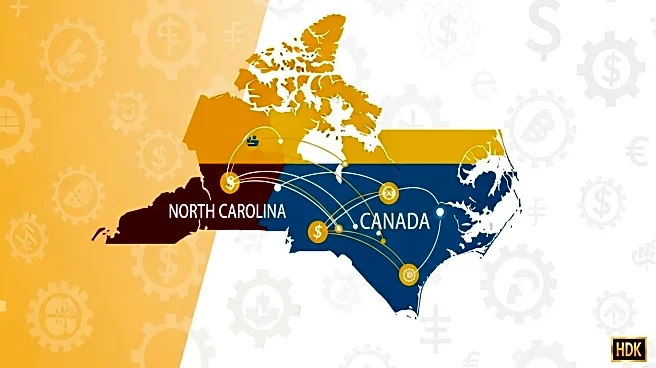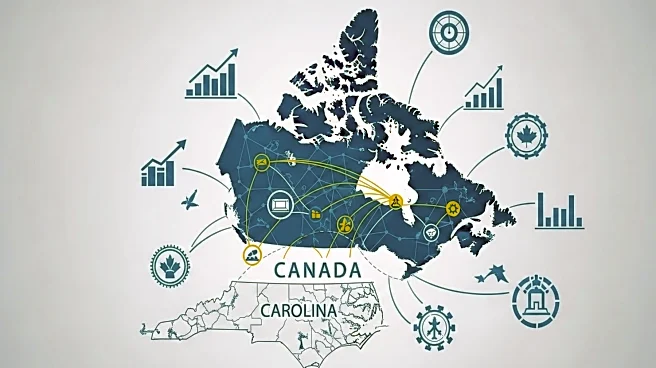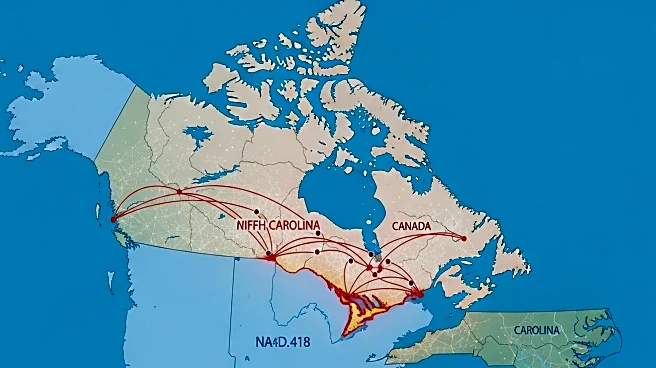What's Happening?
Trade between North Carolina and Canada has remained largely stable despite the imposition of tariffs, according to data from the Economic Development Partnership of North Carolina (EDPNC). As of July, North Carolina's exports to Canada totaled over $5 billion, maintaining Canada's position as the state's largest export market. However, certain commodities have experienced significant shifts. Exports of animal and vegetable fats to Canada have surged by 98.4%, while vehicles and meat exports have increased by approximately 75%. Conversely, exports of aircraft and aircraft parts have plummeted by 54.7%. On the import side, Canadian precious stones and metals have seen a dramatic increase of 4,424.2%, while imports of organic chemicals have decreased by 93.3%. The tariffs, which include a 25% levy on most Canadian imports, were increased to 35% in August as part of the Trump administration's efforts to address Canada's alleged role in the fentanyl crisis.
Why It's Important?
The stability of trade between North Carolina and Canada is crucial given Canada's status as the state's largest export market. The shifts in specific commodity exports and imports highlight the complex impact of tariffs on trade dynamics. The increase in tariffs to 35% could have broader implications for North Carolina's economy, potentially affecting industries reliant on Canadian trade. The significant rise in exports of certain commodities like animal and vegetable fats suggests opportunities for growth in these sectors, while the decline in aircraft-related exports indicates potential challenges. The dramatic increase in imports of precious stones and metals could reflect changing market demands or strategic shifts in trade relationships.
What's Next?
The ongoing tariff situation requires close monitoring, especially with the potential introduction of new tariffs on aircraft and aircraft parts in January 2026. Stakeholders in North Carolina's trade sectors may need to adapt to these changes, potentially seeking alternative markets or adjusting supply chains. The state's economic planners and businesses will likely continue to assess the impact of these tariffs and explore strategies to mitigate any negative effects. The broader geopolitical context, including U.S.-Canada relations and trade policies under the Trump administration, will also play a significant role in shaping future trade dynamics.











